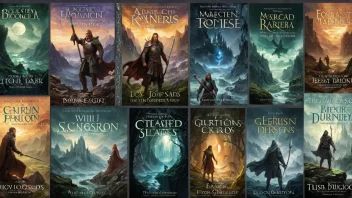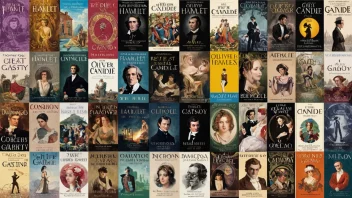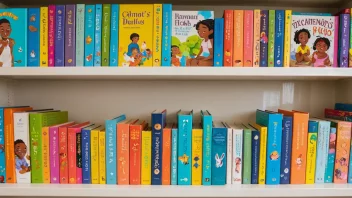In a world that constantly challenges our emotional and mental fortitude, the ability to bounce back from adversity has become more important than ever. Resilience is not just a trait we are born with; it can be cultivated and developed through various means, including literature. While fiction often provides escapism and imaginative narratives, non-fiction holds the unique power to inspire resilience through real-life stories, factual evidence, and actionable advice. This article explores how non-fiction literature can foster resilience among readers, delving into various genres, themes, and the psychological mechanisms that make these narratives impactful.
The Role of Non-Fiction in Developing Resilience
Resilience can be defined as the capacity to recover quickly from difficulties, adapting well in the face of adversity. Non-fiction literature, encompassing memoirs, biographies, self-help books, and more, often presents readers with real-life accounts of struggle, perseverance, and triumph. Here are several key ways non-fiction can foster resilience:
1. Real-Life Examples of Overcoming Adversity
One of the most compelling aspects of non-fiction is its basis in reality. Readers can find inspiration in the stories of individuals who have faced significant challenges and emerged stronger. For instance:
- Memoirs: Books like "Educated" by Tara Westover showcase the author's journey from a strict and abusive household to achieving academic success. Such narratives can instill hope and motivate readers to confront their own challenges.
- Biographies: The life stories of figures like Nelson Mandela or Malala Yousafzai demonstrate resilience in the face of injustice and adversity, encouraging readers to fight for their beliefs.
2. Evidence-Based Strategies for Coping
Many non-fiction works are grounded in psychological research, offering strategies and techniques that can help readers develop resilience. Self-help books often provide:
- Practical Tools: Books like "The Resilience Factor" by Karen Reivich and Andrew Shatté outline specific skills that can be learned to enhance one's resilience.
- Mindfulness Practices: Works that focus on mindfulness, such as "The Power of Now" by Eckhart Tolle, teach readers how to remain present and manage stress effectively.
3. Building Community Through Shared Experiences
Non-fiction literature can also foster a sense of community and shared experience among readers. When individuals recognize their struggles reflected in the stories of others, it can create a profound sense of connection:
- Support Networks: Books that detail recovery from addiction or mental illness, like "The Glass Castle" by Jeannette Walls, can help individuals feel less isolated in their experiences.
- Discussion and Reflection: Non-fiction books often lead to book clubs and discussions, providing a platform for individuals to express their thoughts and feelings, thereby enhancing their resilience.
Genres of Non-Fiction That Promote Resilience
Various genres of non-fiction contribute to the theme of resilience. Here, we explore some prominent categories:
1. Memoirs
Memoirs often provide intimate insights into the lives of individuals who have faced significant hardships. They allow readers to learn from the author's experiences, drawing parallels to their own lives. Noteworthy memoirs include:
- "When Breath Becomes Air" by Paul Kalanithi: A poignant reflection on a neurosurgeon's battle with terminal cancer, offering profound insights into life, death, and meaning.
- "Becoming" by Michelle Obama: An inspiring narrative of overcoming societal and personal obstacles to achieve success and self-acceptance.
2. Self-Help Books
Self-help literature is designed to address specific challenges and provide readers with tools for improvement. Some influential titles include:
- "The Gifts of Imperfection" by Brené Brown: This book encourages readers to embrace vulnerability and imperfection as pathways to resilience.
- "Option B" by Sheryl Sandberg: Co-authored with Adam Grant, this book discusses coping with grief and building resilience after the loss of a loved one.
3. Biographies and Autobiographies
Biographies and autobiographies offer detailed accounts of influential figures who exemplify resilience. These narratives often highlight the struggles and failures that precede their successes:
- "Steve Jobs" by Walter Isaacson: A biography that reveals the complex life of the tech visionary, showcasing his resilience in the face of setbacks.
- "I Am Malala" by Malala Yousafzai: The story of a young girl's fight for education in the face of extreme adversity, inspiring readers to advocate for their rights.
Psychological Mechanisms Behind Resilience in Non-Fiction
Understanding the psychological mechanisms that enable resilience can enhance the impact of non-fiction literature. Some key mechanisms include:
1. Narrative Transportation
Readers often experience a phenomenon known as narrative transportation, where they become emotionally and cognitively immersed in a story. This immersion can lead to:
- Empathy: Readers may feel a deep sense of empathy for the author, which can motivate them to adopt similar resilience strategies in their own lives.
- Personal Reflection: Engaging with a real-life story allows readers to reflect on their own experiences, fostering personal growth and resilience.
2. Cognitive Reappraisal
Non-fiction narratives often encourage readers to reassess their circumstances. Cognitive reappraisal is a technique that can be enhanced through reading:
- Changing Perspectives: By seeing how others have navigated their struggles, readers may find new ways to view their own challenges, reducing feelings of helplessness.
- Finding Meaning: Non-fiction often illustrates how individuals have found meaning in their suffering, prompting readers to seek purpose in their own difficulties.
3. Social Learning Theory
According to Bandura's social learning theory, individuals learn behaviors through observing others. Non-fiction literature serves as a rich source of observational learning:
- Role Models: Readers can adopt resilience-building behaviors by emulating the coping strategies and mindsets of the authors they admire.
- Vicarious Experience: Through the trials of others, readers can experience a sense of resilience without having to endure the same hardships themselves.
Conclusion: The Transformative Power of Non-Fiction
Non-fiction literature serves as a powerful tool for cultivating resilience in readers. Through real-life stories, evidence-based strategies, and shared experiences, these works provide invaluable resources for navigating life's challenges. By exploring memoirs, self-help books, and biographies, readers can find inspiration, practical advice, and a sense of community, all of which contribute to building resilience. As we immerse ourselves in the narratives of those who have triumphed over adversity, we are reminded of our own capacity for strength and adaptability. Ultimately, non-fiction reminds us that while adversity is an inevitable part of life, resilience is a skill that can be nurtured through the stories we choose to engage with.






